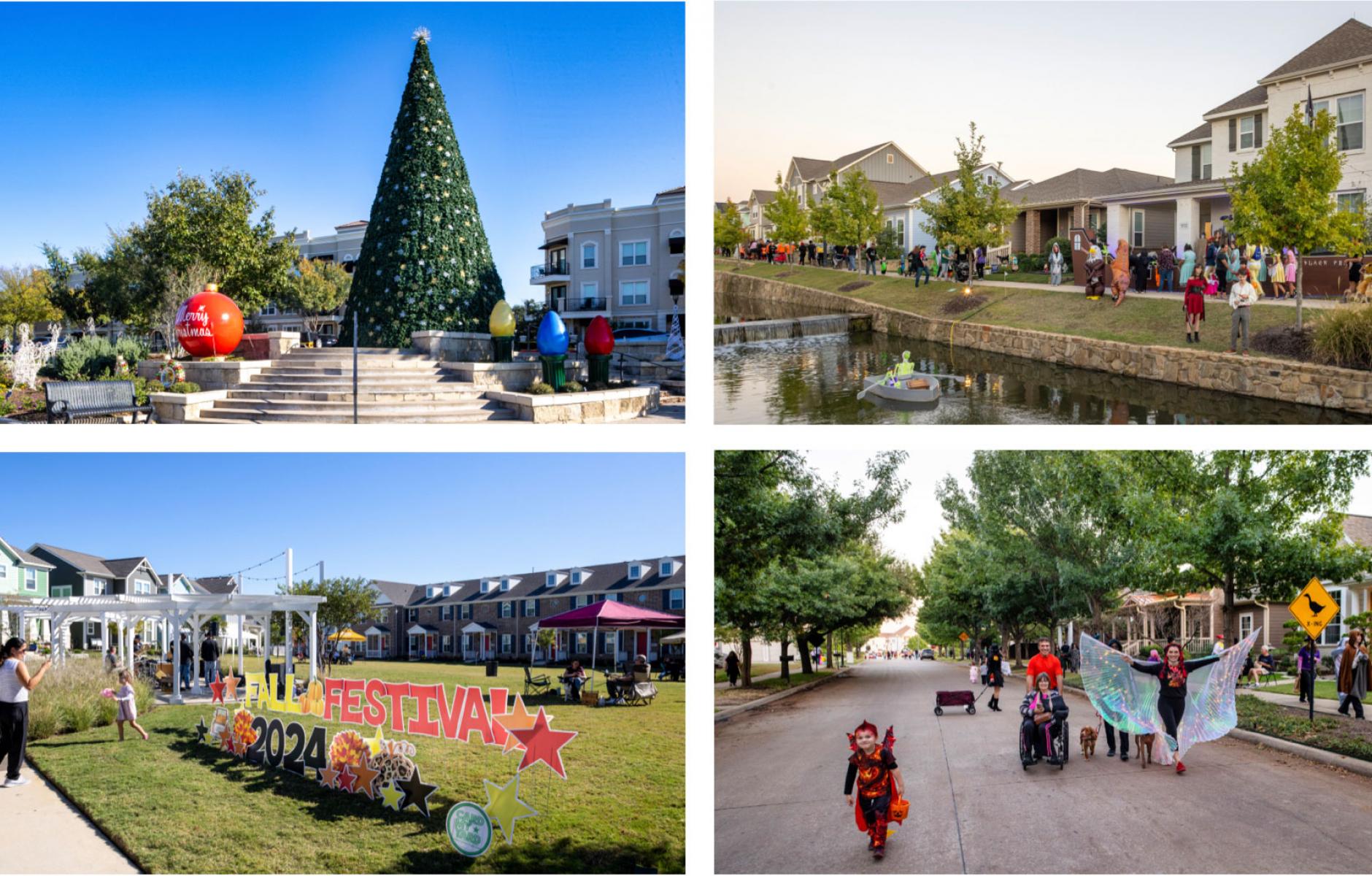
Community stands the test of time
HomeTown in North Richland Hills, is an infill, greyfield, and suburban retrofit development of about 330 acres in the Dallas suburbs, and is nearing completion after 25 years of construction—a remarkable achievement given its long struggles through the Great Recession.
HomeTown is a traditional neighborhood development (TND), with two neighborhoods and a town center. Walkable and diverse of use and housing, it has become the heart of North Richland Hills. The city was carved out of rural farmland in response to a housing subdivision in the early 1950s.
“HomeTown must be considered within the context of North Texas, a market consisting of several municipalities relying on the same highly efficient conventional suburban building types, single-use zoning, and antiquated infrastructure standards,” the city told CNU. “The efficiency and resulting affordability of the housing market is the foundational attraction of investment to North Texas. It regularly exceeds 50,000 single-family and 25,000 multi-family housing starts annually. The market is known for its tyrannical and obsessive cost management.”
HomeTown was designed in 1997 by DPZ CoDesign (then Duany Plater-Zyberk) in a public charrette to create a TND on a closed-down regional airport. Suburban housing had already been built on parts of the site, hence the suburban retrofit. Arcadia Realty, the developer, worked with the city. The plan was to use production builders—a new approach to urbanism at the time. After Phase 1, the Texas-based landscape architecture firm TBG Partners served as Arcadia's design partner throughout the project's completion.
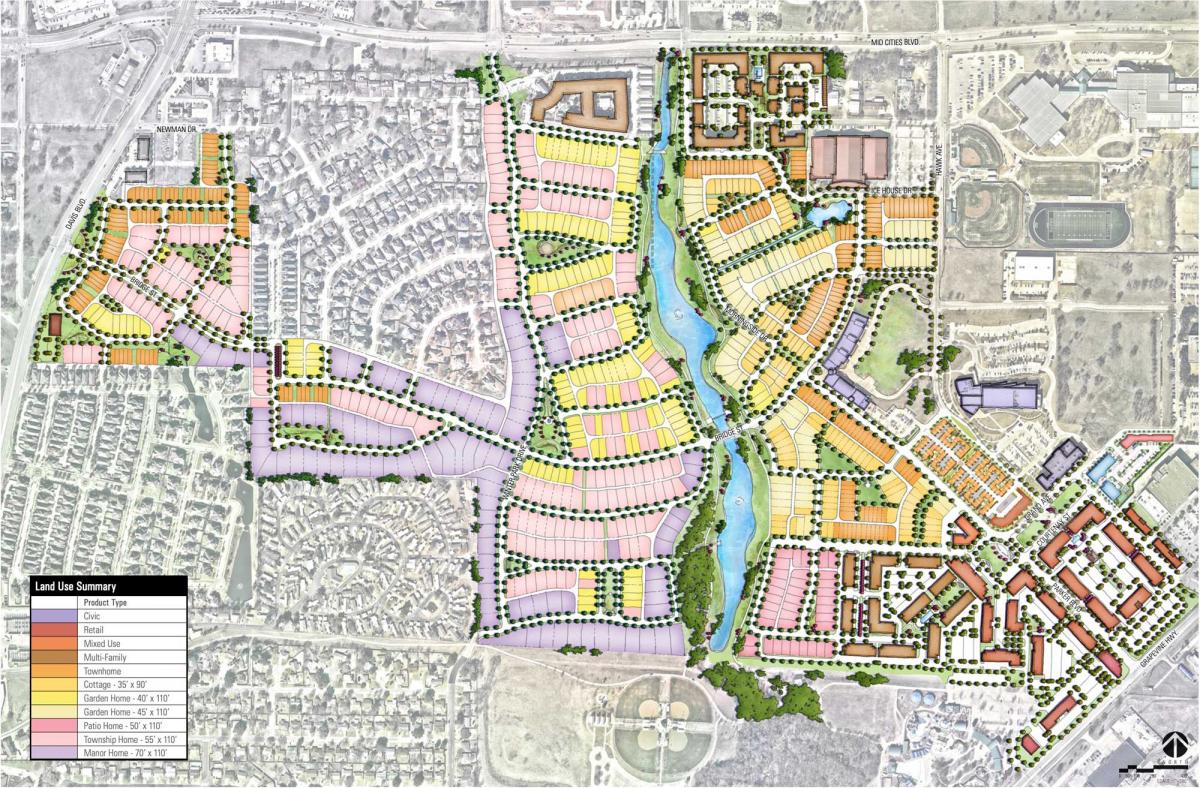
HomeTown is 1990s New Urbanism, and part of what distinguished plans from that era was the generosity of public spaces. New urbanists responded to conventional plans that treated open space as leftover areas with little social value, answering with an abundance of plazas, squares, attached and detached greens, parks of various sizes and shapes, “tot lots”, and more. They were trying to demonstrate how different and better they were, because new urbanists were asking for significant changes: in zoning, street patterns and dimensions, density, and the proximity of uses. In short, everything.
As the city describes it, HomeTown includes “a wide range of public open spaces ranging from paseos and pocket parks to a community park. In all, there are over 90 acres of public open space. This includes the 27-acre Lakes at HomeTown park with a fishing pier, protected wildlife preserve, and the Walkers Creek Trail, which connects to the adjacent North Electric Trail and the rest of the city's 30-mile multiuse off-street trail system.”
It “was also planned around the critical New Urbanist design principle of locating a neighborhood gathering place within one-quarter mile of all homes within the neighborhood. As such, there are over 25 publicly-accessible HOA pocket parks and open spaces interspersed throughout the neighborhood, each with a special feature such as public art, fountains, seating areas, playgrounds, or other features. Numerous paseos link open spaces, parks, and trails, providing generous pedestrian access to the entire neighborhood.”

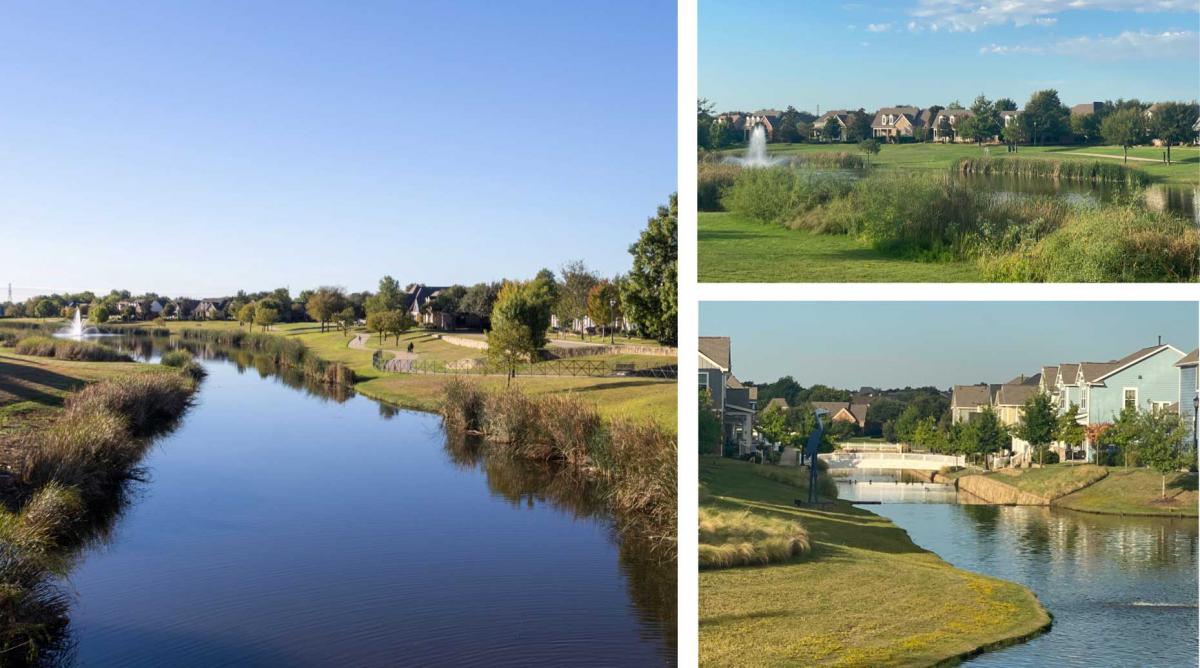
The streets were connected, but also curvy, especially in the residential parts, reflecting the Olmsted and Nolen influences from the early 20th Century. HomeTown pioneered many things regionally, including:
- Introducing a form-based code
- Designing a mix of housing types and uses on a connected network of traffic-calmed streets. This included proving the viability of pre-WW II housing types.
- A range of civic and spaces and buildings within a short walk from each home, including two schools (elementary and high school), a public library, and a community recreation and fitness center.
- A full-scale (Kroger) grocery store, restaurants, pharmacy, and other retail, office, and neighborhood services.
- The design of so-called “mullet buildings,” urban in front, suburban in back—including the library, elementary school, and recreation center—to provide walkability within the neighborhood but accommodate the drivable context of the surrounding city.
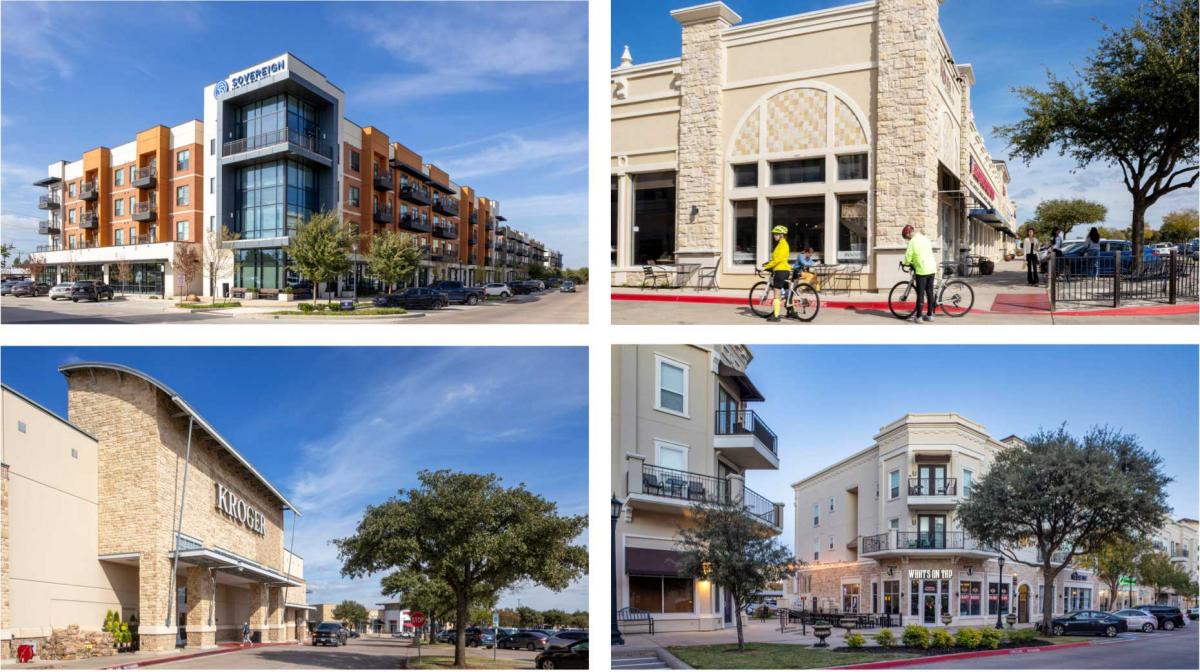
The goal was to prove NU is a “viable and affordable housing choice for regular Texans. Construction was underway with infrastructure by 2000. The difficulties began in 2007, when the nation spiraled into a housing crash. I recall Arcadia’s Bill Gietema presenting at CNU in 2008 or 2009, and seeing something verging on panic in the eyes of developers in the room.
Banks could call loans without warning, demanding all of the money back, Gietema said. If the developer can’t pay because the money is in the streets or underground utilities, they could lose the project. This could happen even if all of the payments are up to date.
HomeTown survived a Biblical seven years of lean times. The Fort Worth Star-Telegram reported in late 2014 that a “construction boom” was taking place in HomeTown, the first time in seven years that a “large tract of houses” was built in the community. This was a turning point because production builders were integral to HomeTown. A decade later, HomeTown is nearly complete. It will ultimately have almost 3,000 houses, including the pre-existing suburban areas. Because part of the site was developed from 1970 to 1990 with typical suburban streets and homes from the era, HomeTown has direct connections to these subdivisions, tying them into the new urban neighborhood.
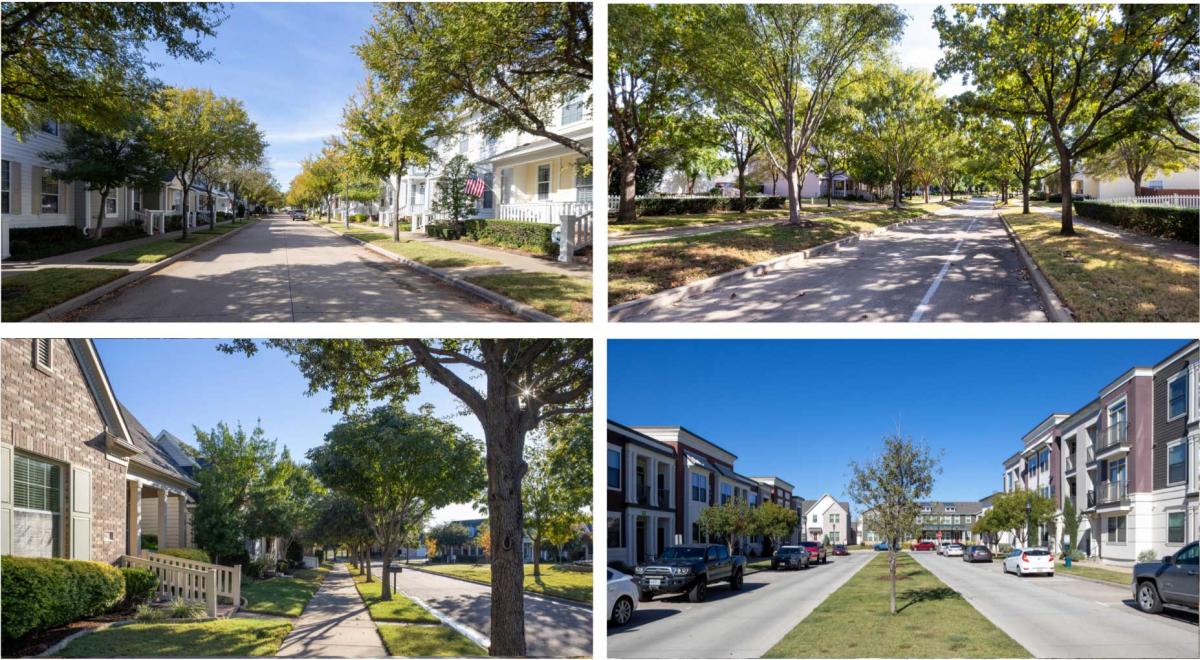
The 1,200 single-family houses built include a variety of more coherent styles, including colonial, Tudor, Victorian, Classical revival, Texas Hill Country, farmhouse, European, coastal, and craftsman. Over 1,100 multifamily units anchor the eastern area of the neighborhood, with many buildings including first-floor commercial space or flex space that can transition between residential and commercial use as the market dictates.
HomeTown is built to accommodate all ages, from grade school children to senior citizens. “Activities of daily living may therefore allow independence to those who do not drive, including the elderly who may live in the 194-unit senior independent living community within the neighborhood,” the city says.
The community is situated within a half mile of the TEXRail commuter rail station, with direct sidewalk and trail connections to the station platform. From there, the neighborhood is connected by rail transit to Downtown Fort Worth, DFW International Airport, and many other communities and transit systems within the DFW Metroplex.
A hotel, and a few hundred multifamily and single houses will complete the buildout.
Resident and urban planner Jayashree Narayana sums it up: “HomeTown is one of the first mixed-residential neighborhoods in the Dallas-Fort Worth metroplex and has grown over the last 25 years to be a true neighborhood with a wide range of housing and building types. HomeTown is now having the ripple effect of attracting quality retail and redevelopment investment around it. It has parks, trails, and open spaces that add to the quality of life for its residents and the community as a whole. Having been a HomeTown resident since 2008, I have seen the neighborhood grow and mature. Its value has stood the test of time.”




